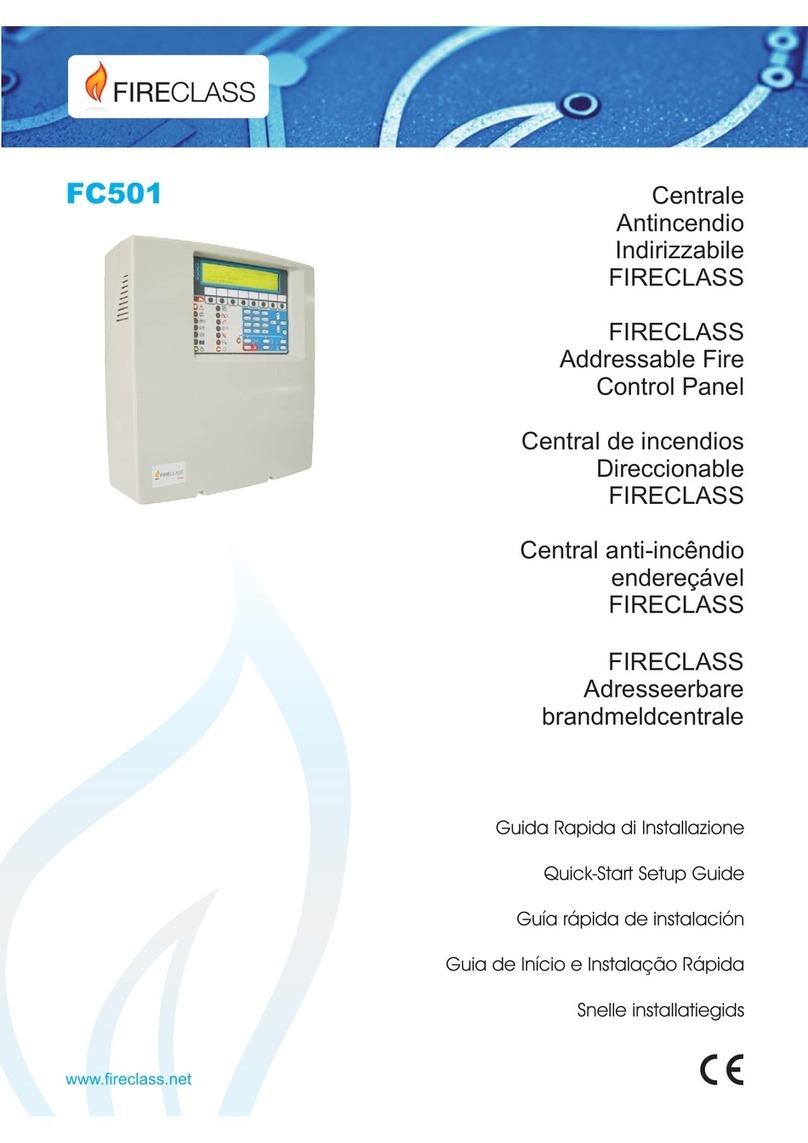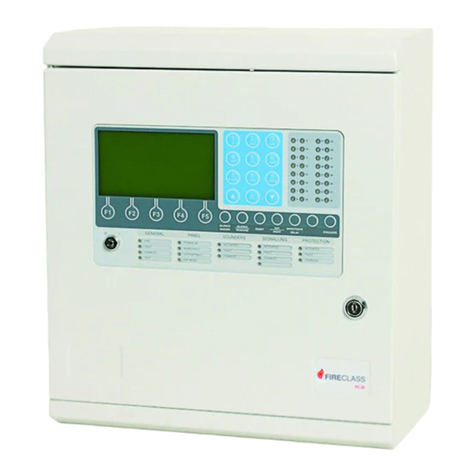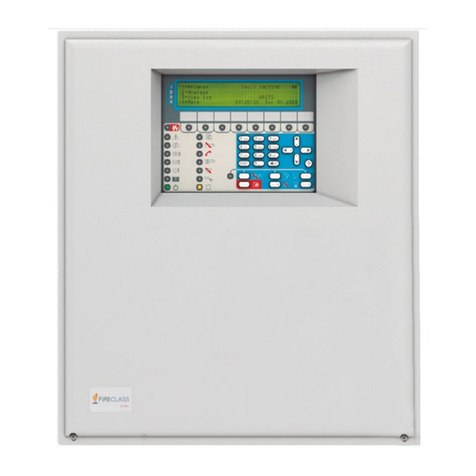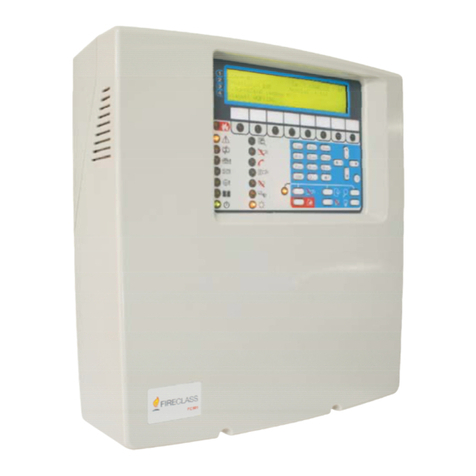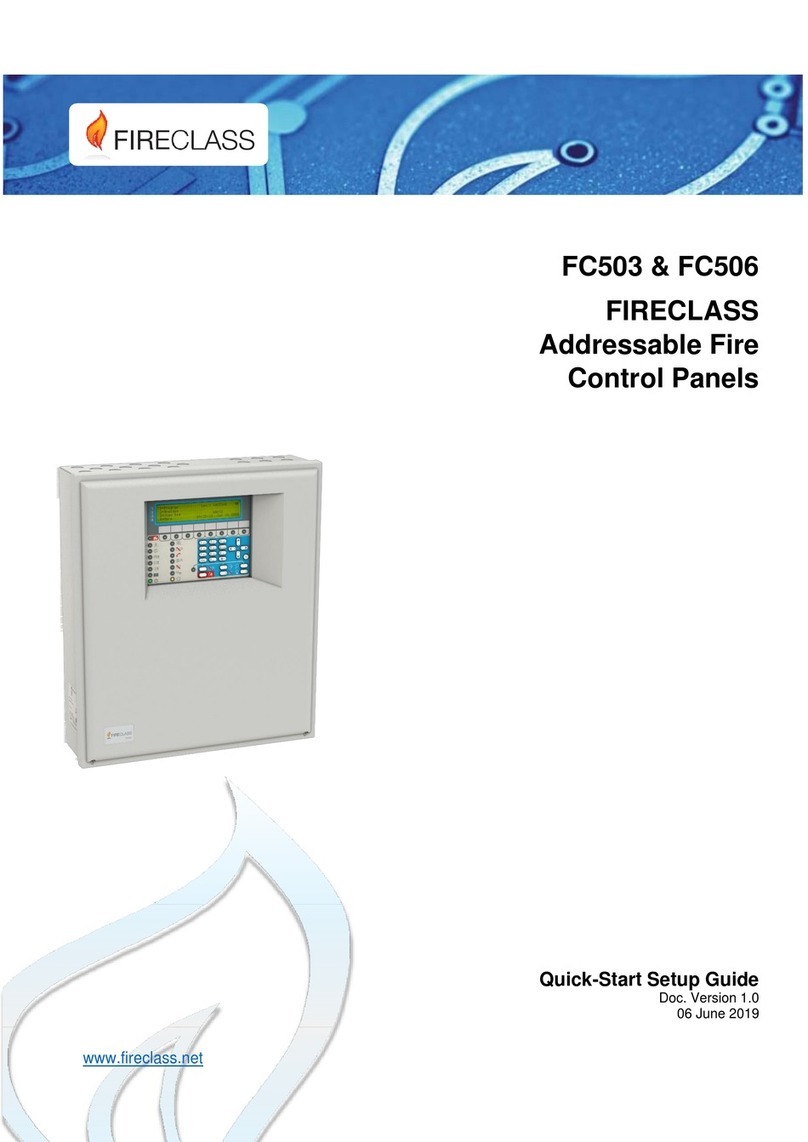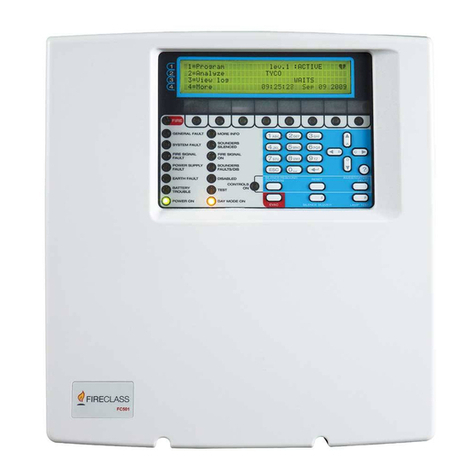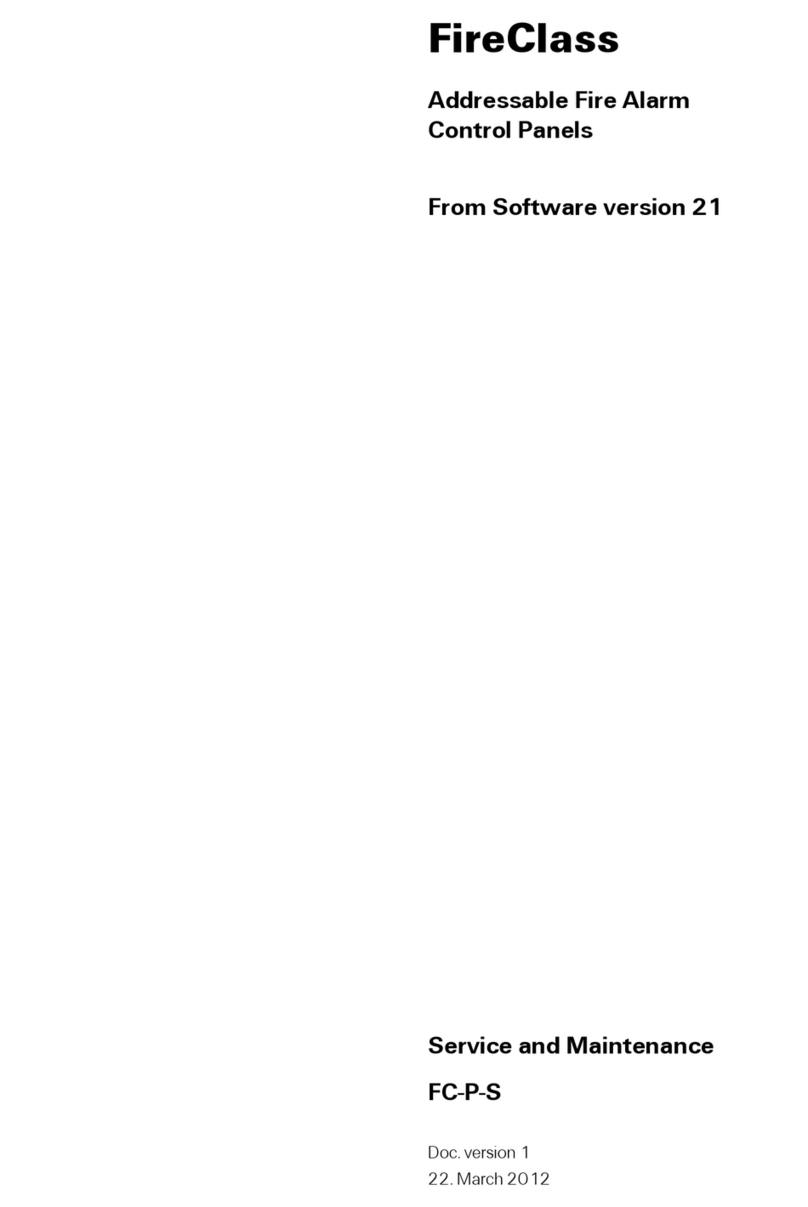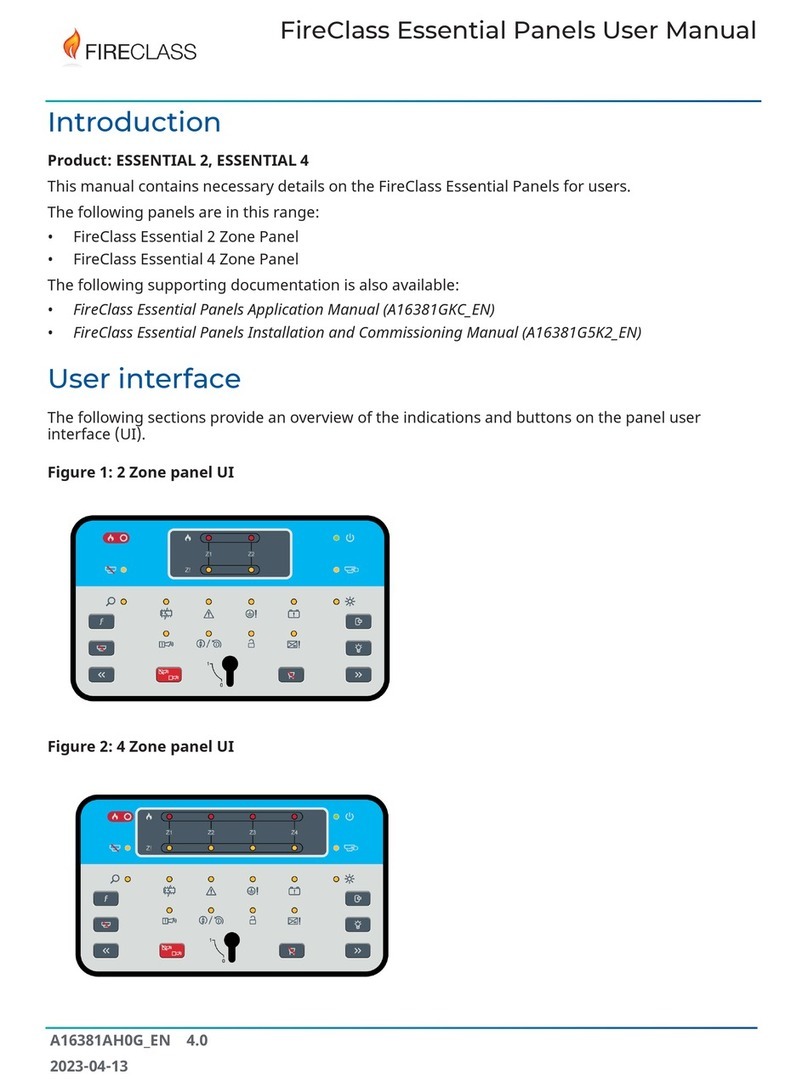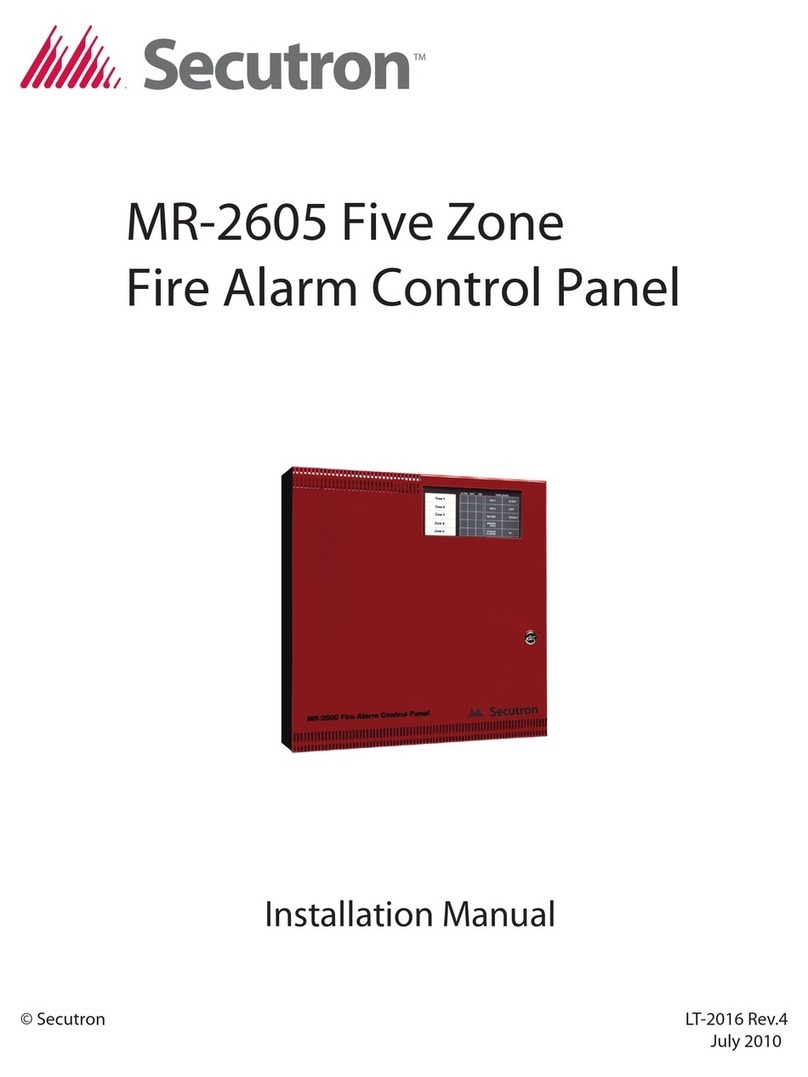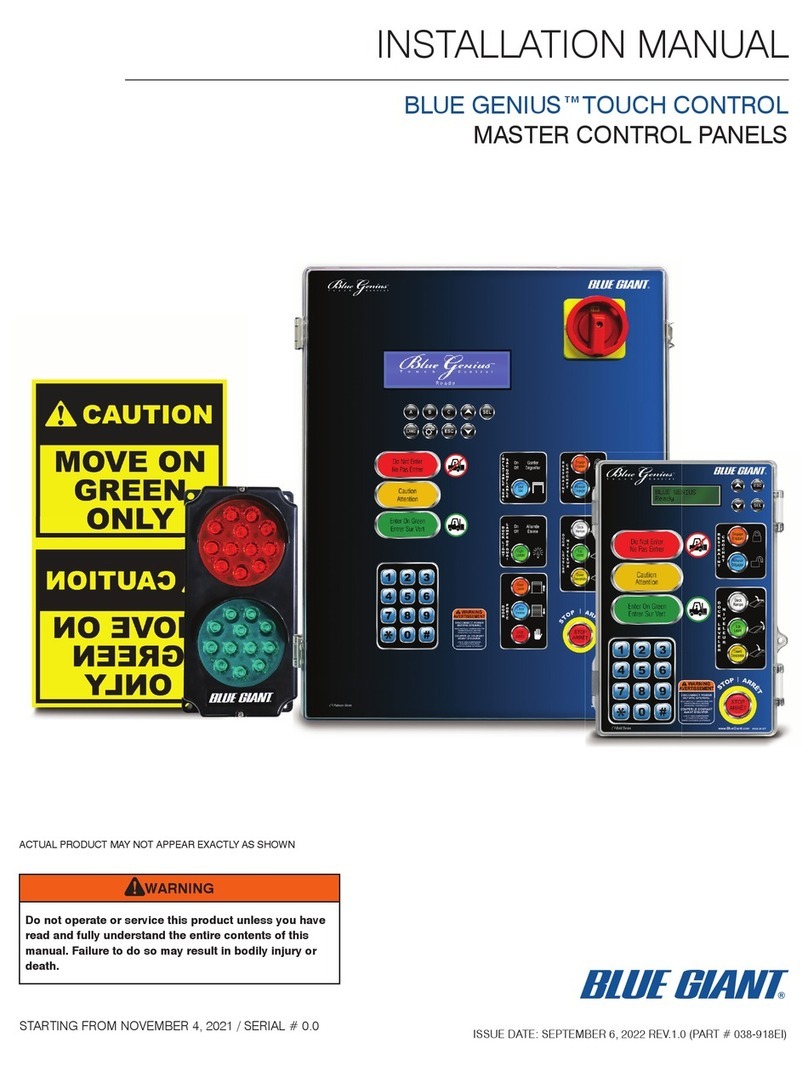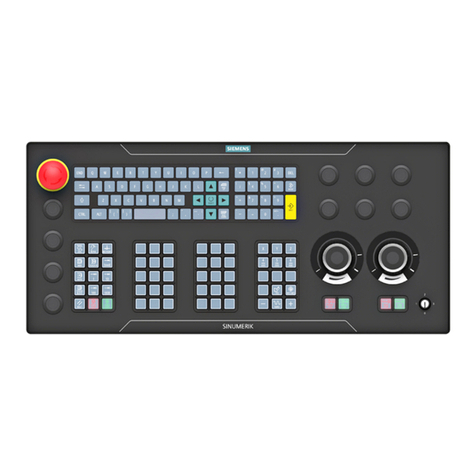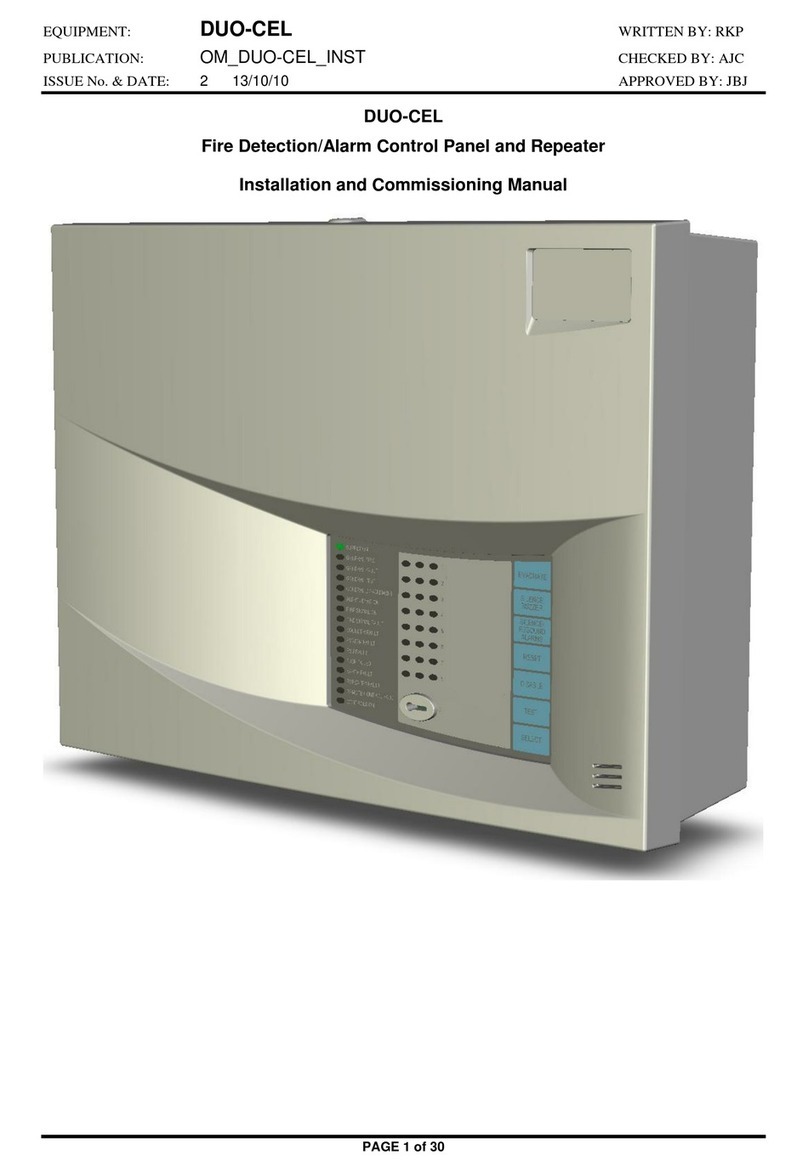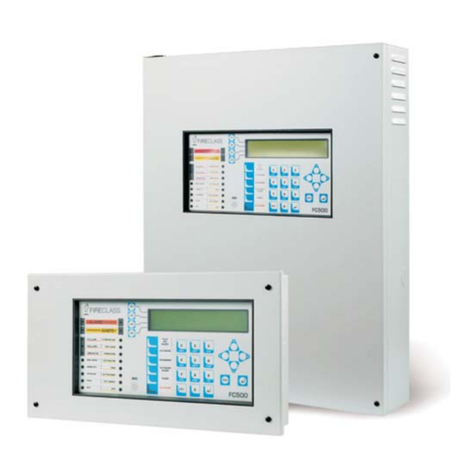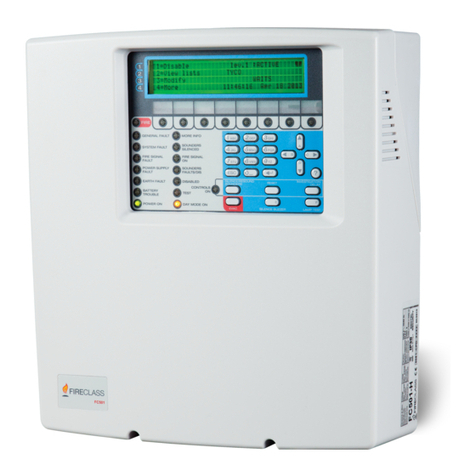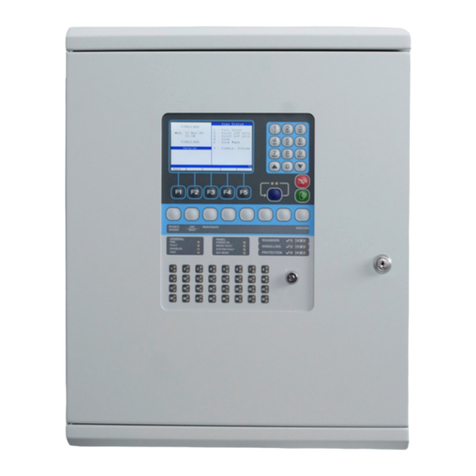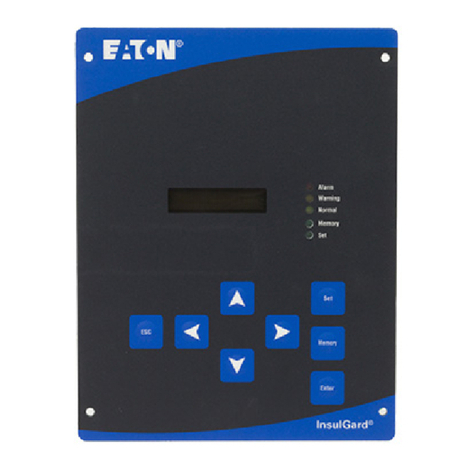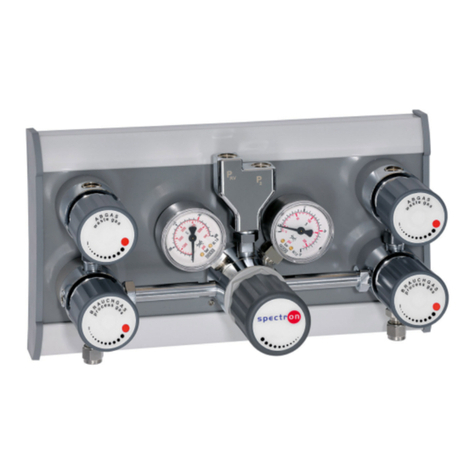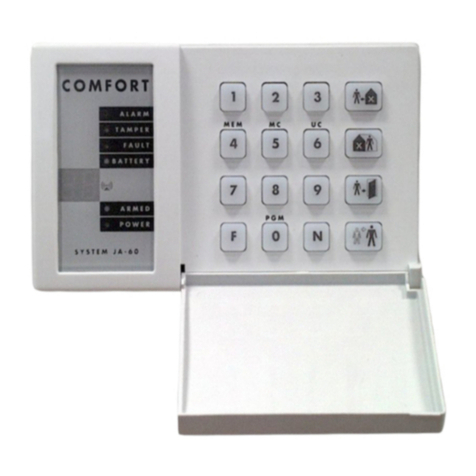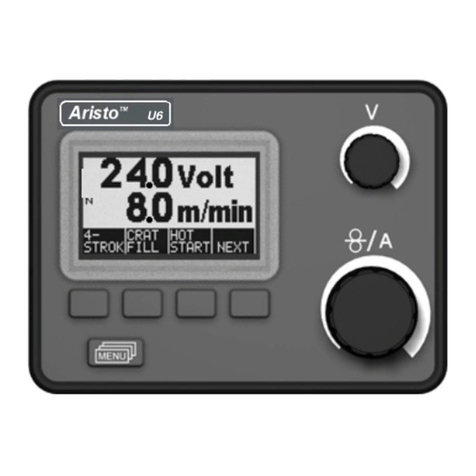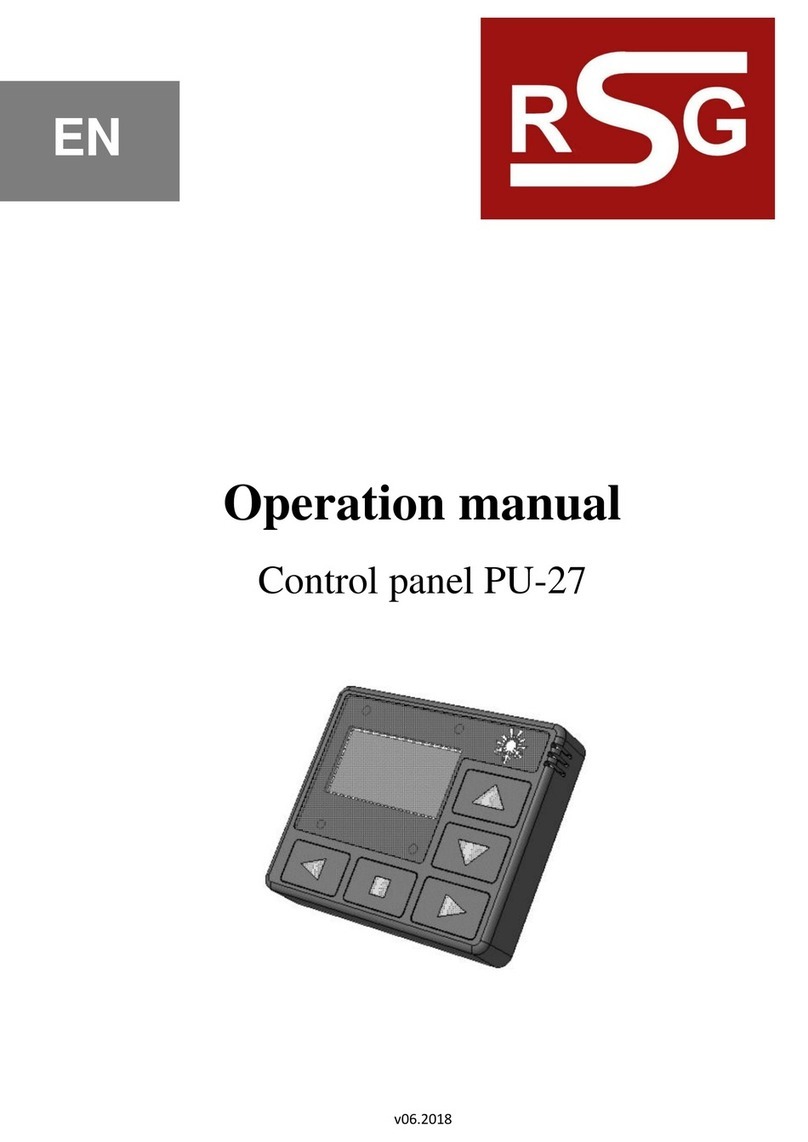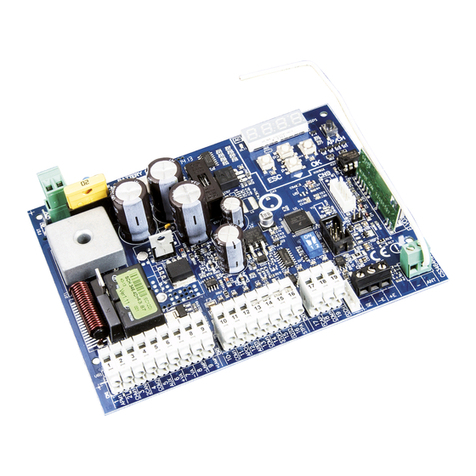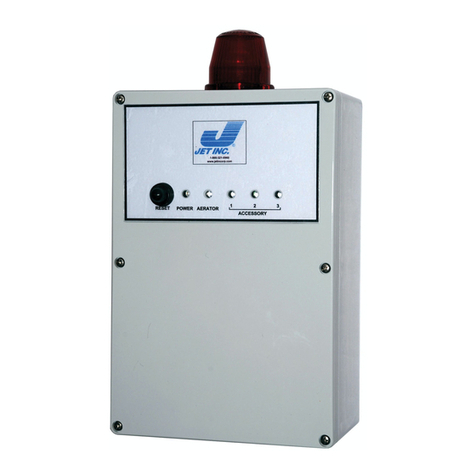
EQUIPMENT: FIRECLASS PRECEPT EN
PUBLICATION: FIRECLASS PREC EN APP
ISSUE No. & DATE: 3 17/01/23
PAGE 2 of 38
List of Contents
1. LIST OF FIGURES ............................................... 3
2. LIST OF TABLES................................................. 3
3. INTRODUCTION .................................................. 4
4. GENERAL DESCRIPTION ..................................... 4
4.1. CABINET SPECIFICATIONS .......................... 4
4.1.1. SURFACE PANEL ORDER CODES &
DESCRIPTIONS ........................................ 4
4.1.2. SEMI-FLUSH PANEL ORDER CODES &
DESCRIPTIONS ........................................ 5
4.1.3. PRECEPT EN FULLY FLUSH PANEL ORDER
CODES AND DESCRIPTIONS ..................... 5
4.2. PANEL DESCRIPTION.................................. 6
4.2.1. C1626 2/4 ZONE MOTHERBOARD ............ 7
4.2.2. C1627 8/16/32 ZONE MOTHERBOARD ..... 7
4.2.3. C1632 16 ZONE EXPANSION BOARD........ 7
4.2.4. C1628 16 ZONE DISPLAY BOARD AND
C1629 32 ZONE DISPLAY BOARD ............ 7
4.2.5. C1631 REPEATER INTERFACE BOARD...... 7
4.3. PANEL ASSEMBLY ...................................... 8
4.4. PANEL RANGE.......................................... 11
4.5. REPEATER DESCRIPTION ......................... 11
5. FUNCTIONAL SPECIFICATION ............................ 11
5.1. PANEL INPUT/OUTPUT LIST ...................... 11
5.2. FEATURES LIST........................................ 12
6. PRECEPT EN C1627 MOTHERBOARD FEATURES
....................................................................... 14
7. PRECEPT EN C1632 16 ZONE EXPANSION BOARD
FEATURES ...................................................... 15
8. POWER SUPPLIES............................................ 15
8.1. BATTERY CHARGER ................................. 15
8.2. VISUAL INDICATIONS................................. 15
8.3. FAULT OUTPUTS ...................................... 16
8.4. BATTERY DISCONNECT ............................ 16
8.5. 32 ZONE PRECEPT EN POWER SUPPLY
FEATURES &CONNECTIONS ..................... 16
9. COMPATIBLE FIELD DEVICES............................ 17
9.1. FIELD DEVICE ORDER CODES &
DESCRIPTIONS......................................... 17
10. OVERVIEW OF USER FUNCTIONS ...................... 19
10.1. USER INDICATIONS................................... 19
10.2. USER CONTROLS..................................... 20
10.3. SELECTION OF DETECTION ZONES OR
OUTPUTS FOR DISABLEMENT,ENABLEMENT
OR TEST.................................................. 21
10.4. DISABLEMENT/RE-ENABLEMENT OF
DETECTION ZONES AND OUTPUTS ............ 21
10.5. DETECTOR ZONE ONE MAN TEST. ............ 21
10.6. ALARM SOUNDER ONE MAN TEST ............. 21
11. OVERVIEW OF ENGINEERS FUNCTIONS ............. 21
11.1. ENGINEER’S CONFIGURATION PROCESS .... 21
11.1.1. ZONE/OUTPUT DELAY CONFIGURATION.. 21
11.1.2. FACTORY DEFAULT CONFIGURATION...... 22
11.1.3. OTHER CONFIGURABLE FEATURES......... 22
11.2. CONFIGURABLE DETECTION ZONES .......... 22
11.3. DELAY ZONE CONFIGURATION................... 22
11.4. STANDARD OR INTRINSICALLY SAFE ZONE. 22
11.5. SHORT CIRCUIT FIRE CONFIGURATION ....... 22
11.6. THE DELAY MODE FEATURE...................... 22
11.6.1. CONFIGURE DELAY ZONES .................... 22
11.6.2. 1-2 STAGE DELAY................................. 23
11.6.3. SELECTION OF OUTPUTS TO BE DELAYED 23
11.7. SELECTABLE ZONAL OR GENERAL ALARM
SOUNDER OPERATION.............................. 23
11.8. PULSE NON-ALARM ZONES...................... 23
11.9. INHIBIT FIRE PROTECTION ON NON-LATCHED
ZONE ...................................................... 23
11.10. DELAY ALARM SILENCE AND RESET ......... 23
11.11. ALARMS ON EVACUATE ONLY................... 23
11.12. SILENCE BEFORE RESET ......................... 23
11.13. SILENT ZONE TEST.................................. 23
11.14. BUZZER DISABLE..................................... 23
11.15. LATCHED FAULTS .................................... 23
11.16. REPEATER CONFIGURATION..................... 23
11.17. OUTPUT RELAY CONFIGURATION ............. 23
11.18. EARTH FAULT MONITORING. ..................... 24
12. PANEL REPEATERS ......................................... 24
13. CIRCUIT CONNECTION DETAILS........................ 24
13.1. AUXILIARY SUPPLY .................................. 24
13.2. FIRE ROUTING,FIRE PROTECTION AND
FAULT ROUTING OUTPUTS ....................... 25
13.3. USE OF AUXILIARY INPUTS ....................... 26
13.4. SOUNDER CIRCUITS ................................ 26
14. ELECTRICAL DESIGN OF DETECTION ZONES ..... 26
14.1. MAXIMUM NUMBER OF DEVICES ON A ZONE
.............................................................. 26
15. C1651 CLOCK/TIMER MODULE........................ 27
15.1. CLOCK MODULE FUNCTIONALITY.............. 27
15.1.1. ALARM COUNTER.................................. 27
15.1.2. DAY/NIGHT DELAY MODE CONTROL ....... 27
15.1.3. 1ST FIRE ALARM TIME ............................ 27
15.2. CLOCK MODULE EDIT FACILITY ................ 27
15.2.1. USER CONTROL/EDITING....................... 27
15.2.2. ENGINEER’S EDITING AND CONFIGURATION
............................................................ 27
15.3. C1651 CLOCK MODULE PCB FEATURES.. 28
16. MECHANICAL,ELECTRICAL &ENVIRONMENTAL
SPECIFICATION ............................................... 30
17. PRECEPT EN INPUT &OUTPUT SPECIFICATION 32
18. APPENDIX ....................................................... 34
18.1. EN54 OPTIONAL FUNCTIONS WITH
REQUIREMENTS....................................... 34
18.2. ANCILLARY FUNCTIONS NOT REQUIRED BY
EN54 ..................................................... 34
18.3. POWER SUPPLY LOAD CALCULATION ....... 34
18.4. BATTERY STANDBY CAPACITY CALCULATION
.............................................................. 35
18.5. PANEL CONFIGURATION DESIGN CHART ... 36



















